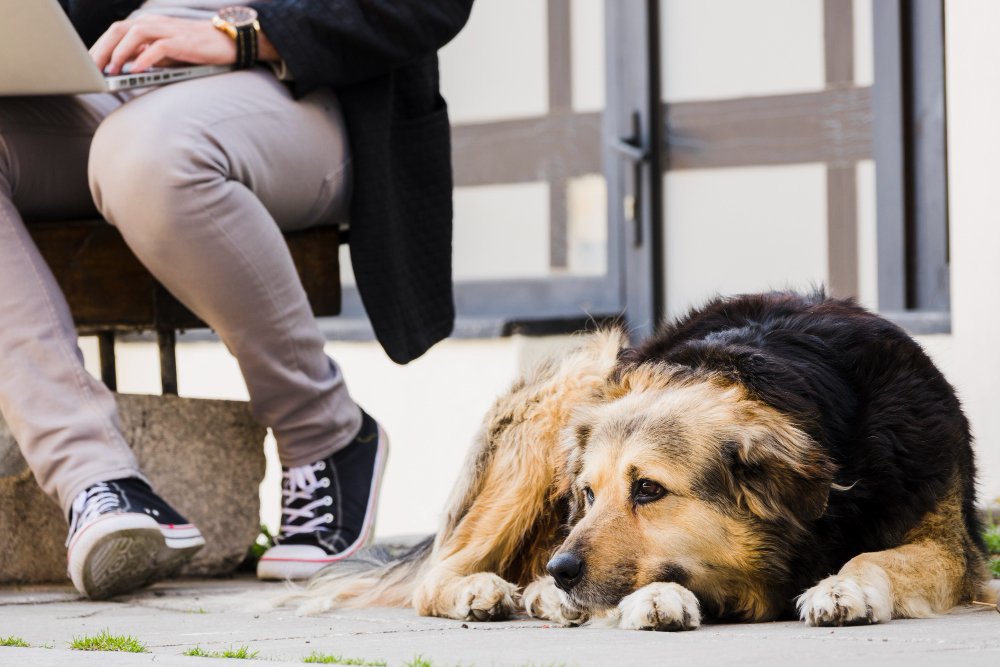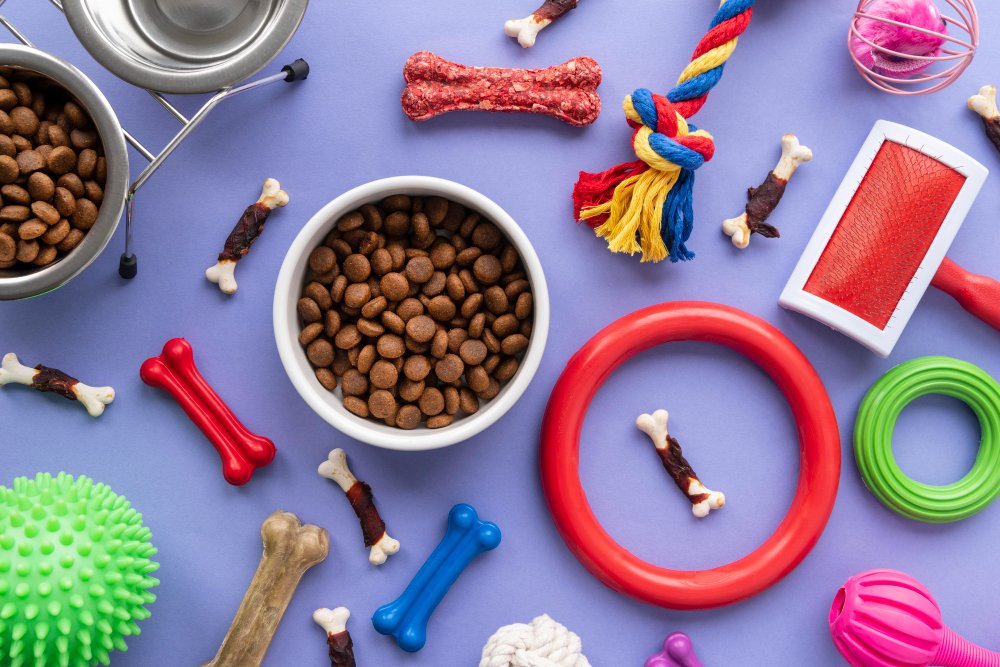If you have adopted a rescue dog, you might have noticed that he is not very interested in playing with toys. This is not uncommon, as many rescue dogs have had traumatic or deprived experiences that have made them fearful or indifferent to toys.
However, playing with toys can be a great way to bond with your dog, provide him with mental and physical stimulation, and improve his confidence and happiness.
In this blog post, we will share some tips on how to teach a rescue dog to play with toys and have fun with you.

Why Some Rescue Dogs Don’t Play with Toys?
There are many possible reasons why a rescue dog might not play with toys. Some of them are:
- Lack of Exposure:
Some rescue dogs have never had the opportunity to play with toys in their previous homes or shelters. They might not know what toys are or how to use them.
- Fear:
Some rescue dogs have been abused or punished for playing with toys or showing interest in them. They might associate toys with pain or danger and avoid them.
- Stress:
Some rescue dogs are still adjusting to their new environment and family. They might be overwhelmed by the changes and feel anxious or insecure.
They might not be in the mood to play or explore new things.
- Health Issues:
Some rescue dogs might have underlying health problems that affect their energy level, appetite, or mood. They might not feel well enough to play or enjoy toys.
How to Encourage Your Rescue Dog to Play with Toys?
If you want to teach your rescue dog to play with toys, you need to be patient, gentle, and positive. Here are some steps you can follow to help your dog overcome his aversion to toys and discover the joy of play.
Create a Positive Environment
Give your dog a positive environment. Make sure there are no loud noises, distractions, or other pets that might scare or bother him.
Provide him with a cozy bed, fresh water, and some treats. Let him relax and feel at home.
Choose the Right Toys

Provide your dogs with the toys that best suit their preferences. Avoid toys that are too hard, too small, or have sharp edges that might hurt him.
Choose toys that are soft, squeaky, or have interesting textures or smells.
You can also use food puzzles, such as Kong toys, that dispense treats when your dog plays with them. These can motivate your dog to interact with the toy and reward him for his efforts.
Introduce the Toys Gradually
Try to not overwhelm your dog with too many toys at once. Start with one or two toys and leave them in his bed or near his food bowl.
Let him sniff and explore them on his own.
Don’t force him to play with them or take them away from him. Praise him and give him a treat if he shows any interest in the toys.
Play Together
Once your dog is familiar with the toys, you can try to play with him. Pick up a toy and make it move or squeak. Show him how much fun it is.
Invite him to join you by saying his name, using a playful voice, or tossing the toy gently towards him.
Don’t chase him or tug on the toy if he takes it. Let him have it and praise him. If he drops it, pick it up and offer it to him again.
Keep the play sessions short and positive. End them before he loses interest or gets tired.
Incorporate Training Commands

You can also use toys to teach your dog some basic commands, such as “sit”, “stay”, “come”, or “drop it”.
For example, you can ask your dog to sit before you throw the toy for him to fetch. Or you can ask him to drop the toy in your hand before you give him a treat.
This way, you can make the play more structured and rewarding for both of you.
Make it Rewarding
Always reward your dog for playing with toys. Use treats, praise, petting, or more play as incentives.
Make him feel that playing with toys is a fun and positive experience. Avoid scolding, yelling, or punishing him for not playing or playing incorrectly. This will only make him more fearful or reluctant to play.
Be Patient and Consistent
Remember, You should not expect your dog to become a toy lover overnight. It might take days, weeks, or even months for him to learn to play with toys.
Be patient and consistent with your training. Don’t give up or get frustrated. Celebrate every small progress and enjoy every moment of play with your dog.
Gradually Increase Difficulty
As your dog becomes more confident and playful, you can introduce new toys, new games, or new challenges. For example, you can use different types of toys, such as balls, ropes, or frisbees.
You can play in different locations, such as the backyard, the park, or the beach. You can also increase the distance, speed, or duration of the play.
This will keep your dog interested, stimulated, and happy.
Final Thoughts
Playing with toys is not only fun but also beneficial for your rescue dog. It can help him bond with you, exercise his body and mind, and improve his well-being. By following the tips above, you can teach your rescue dog to play with toys and have a blast with you. Remember to be patient, gentle, and positive, and you will soon see your dog’s playful side emerge.

